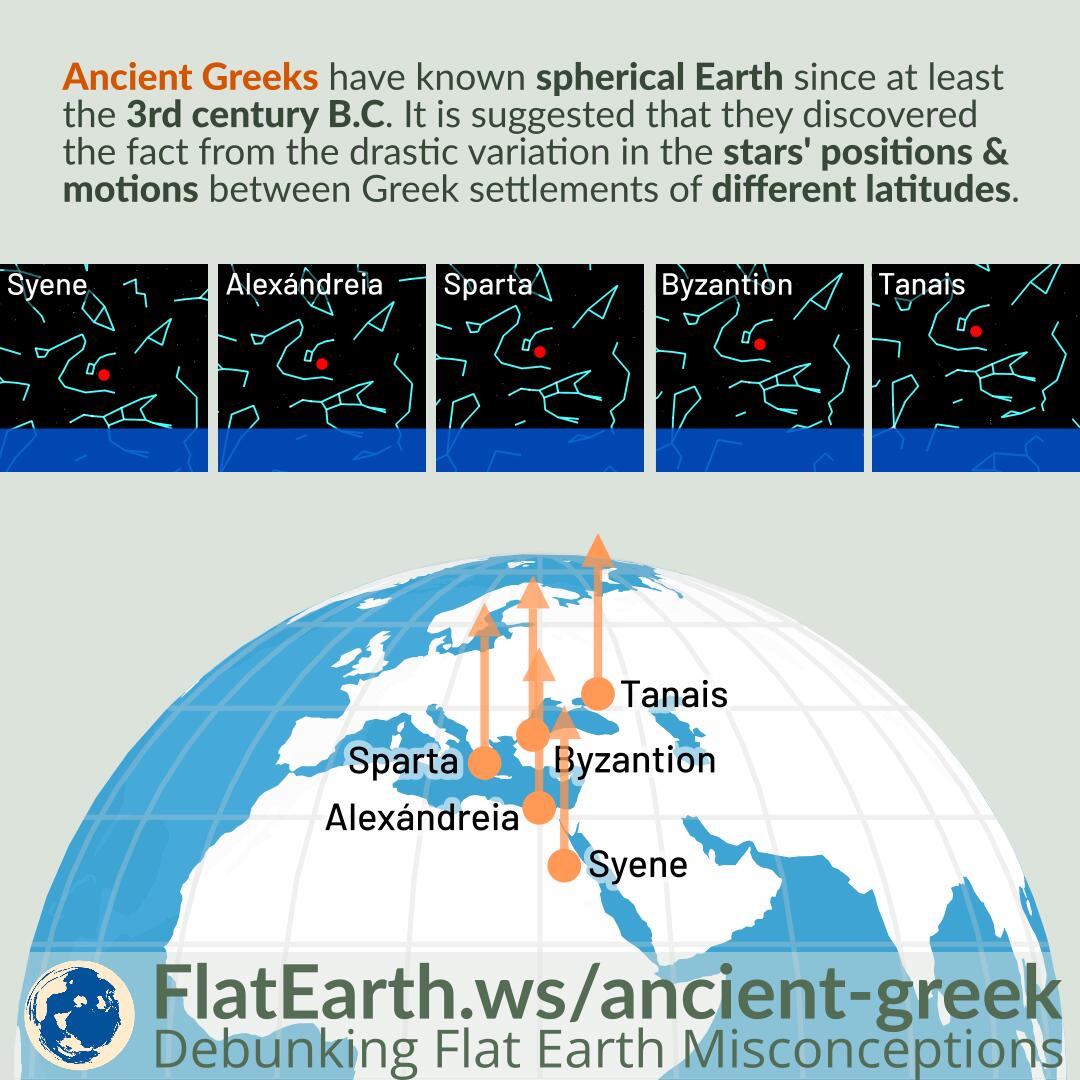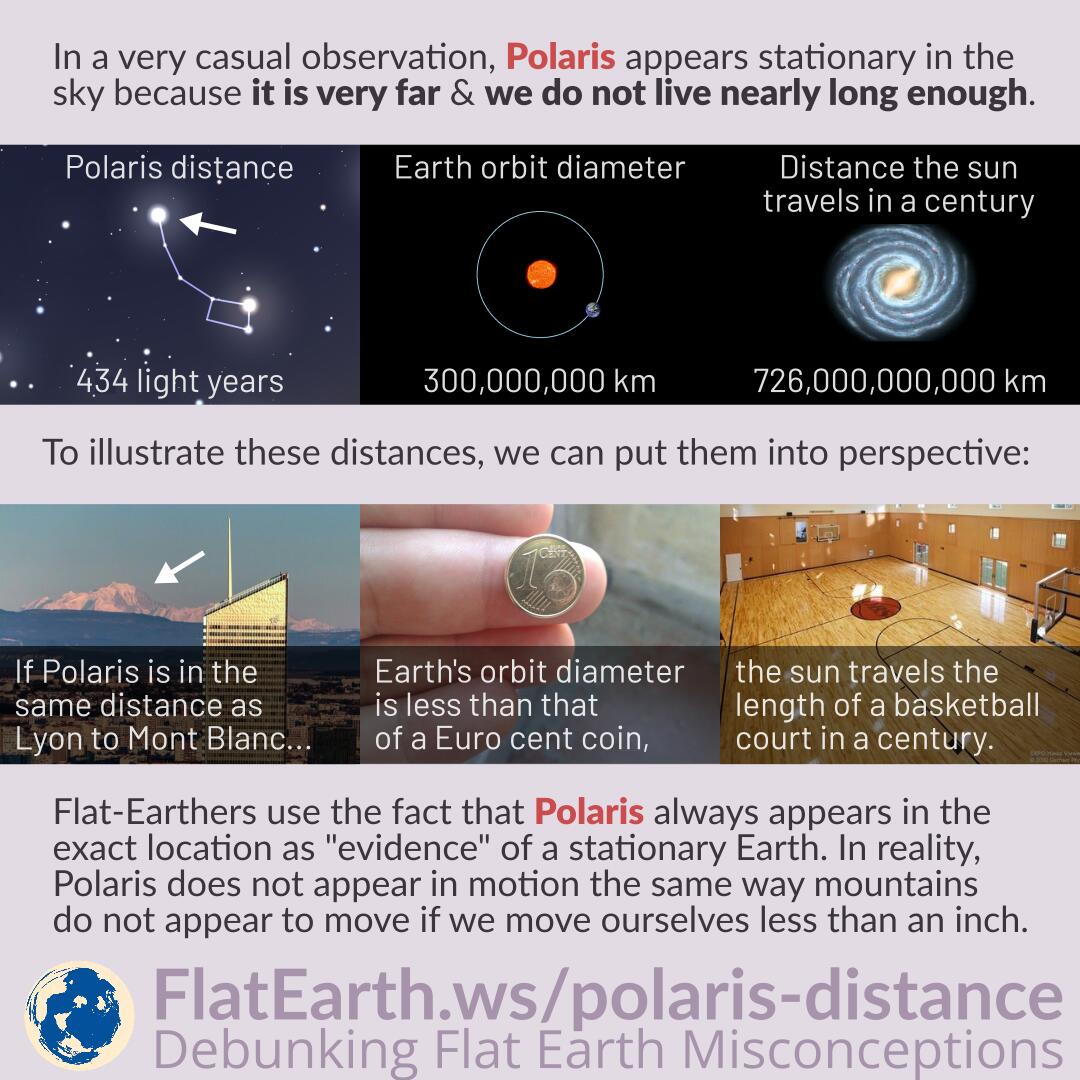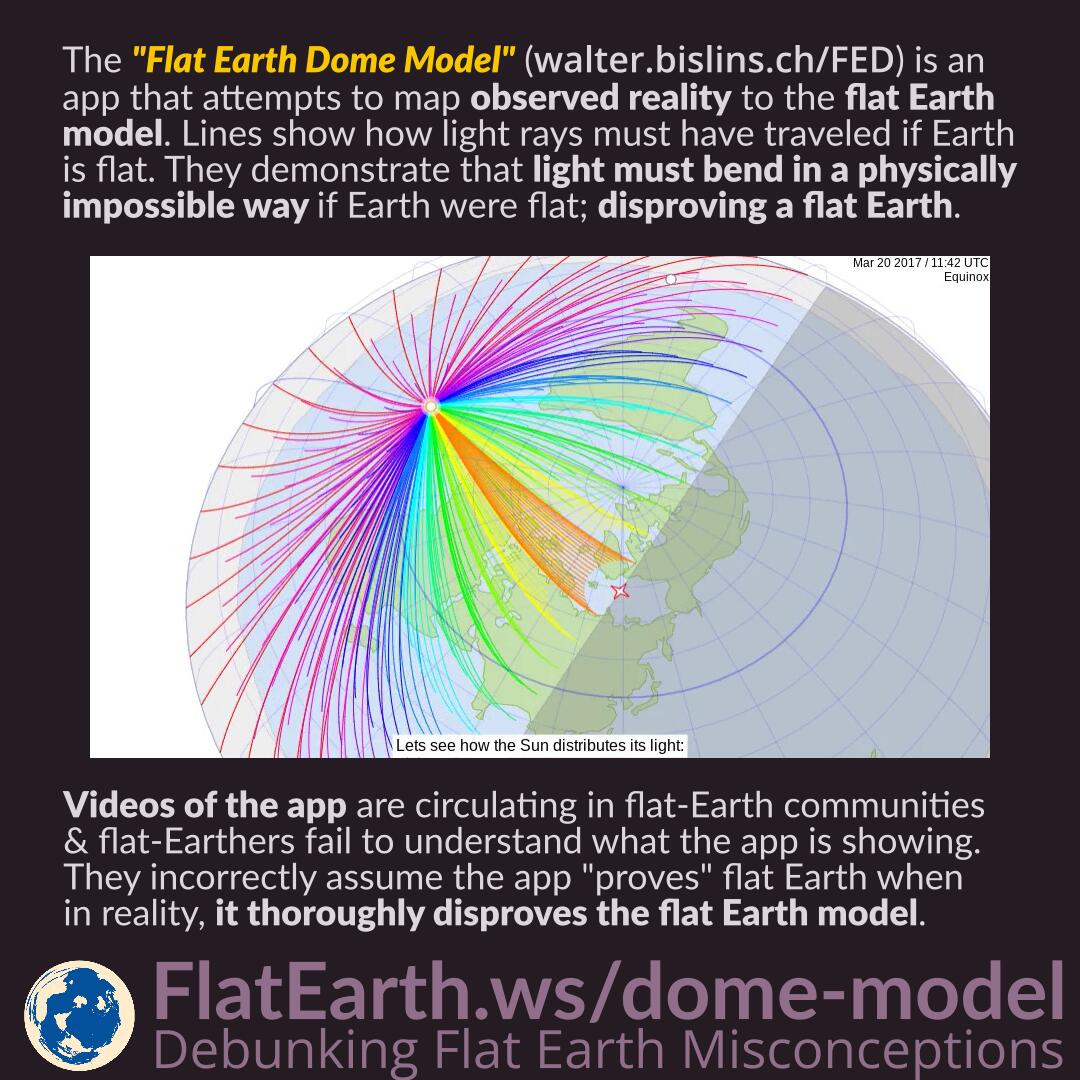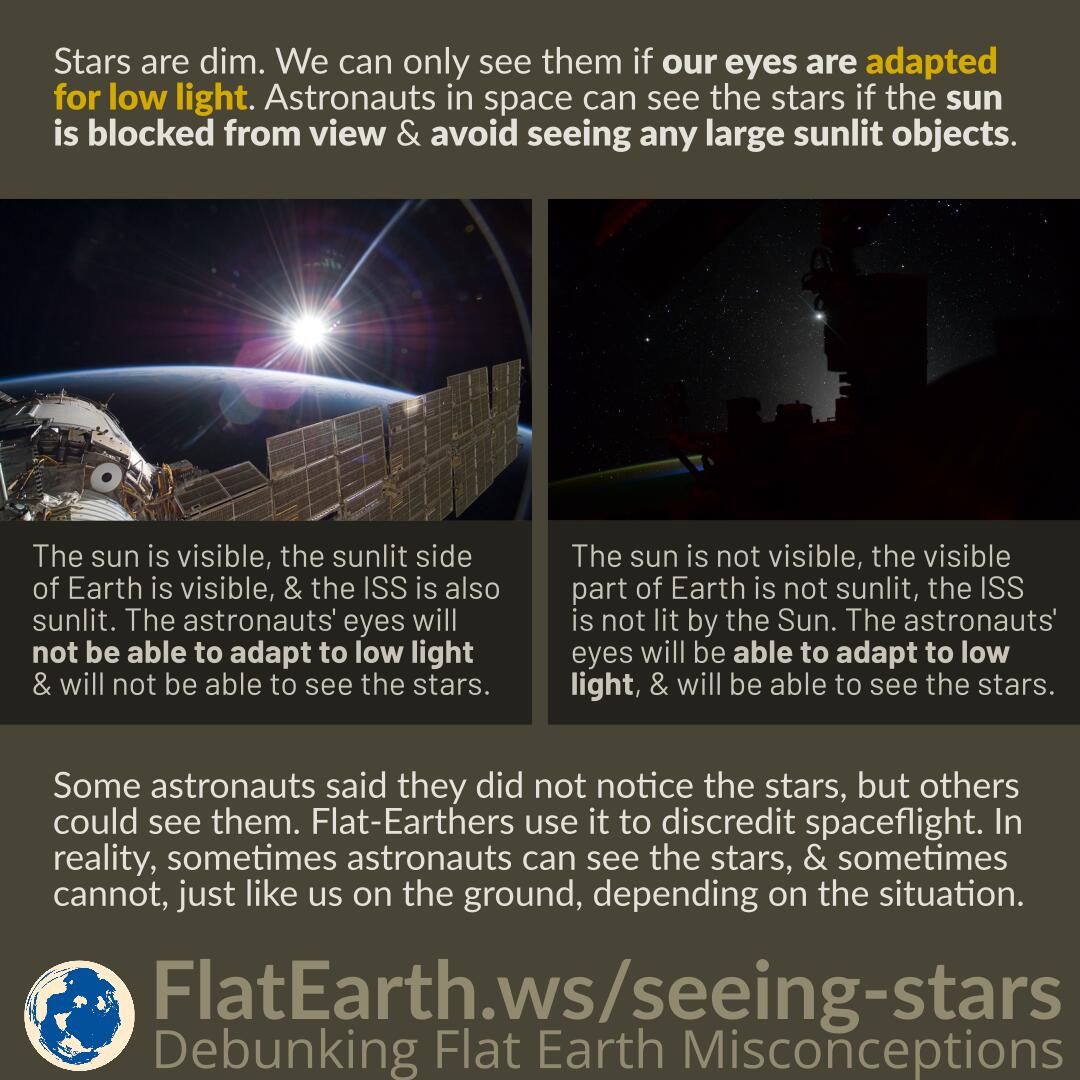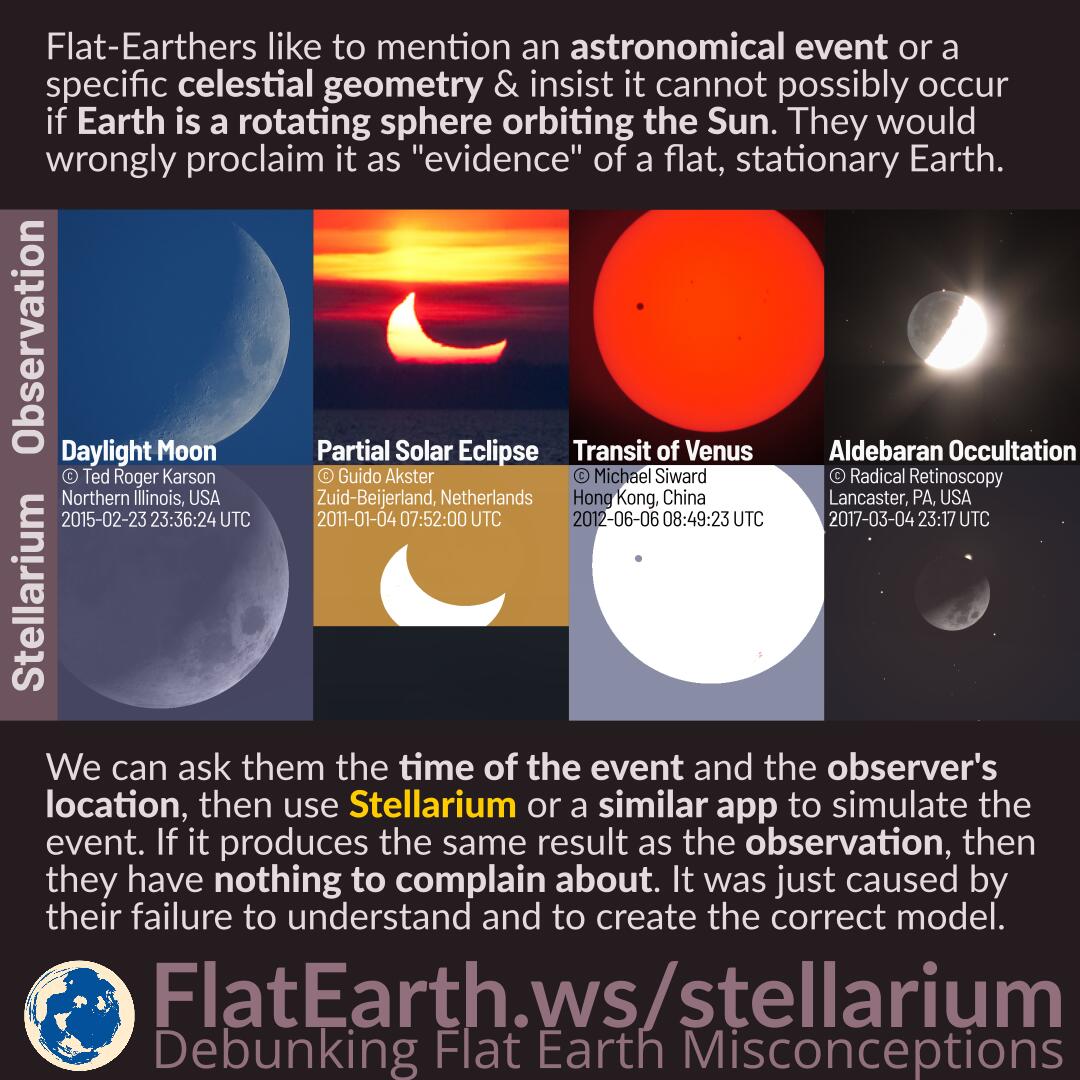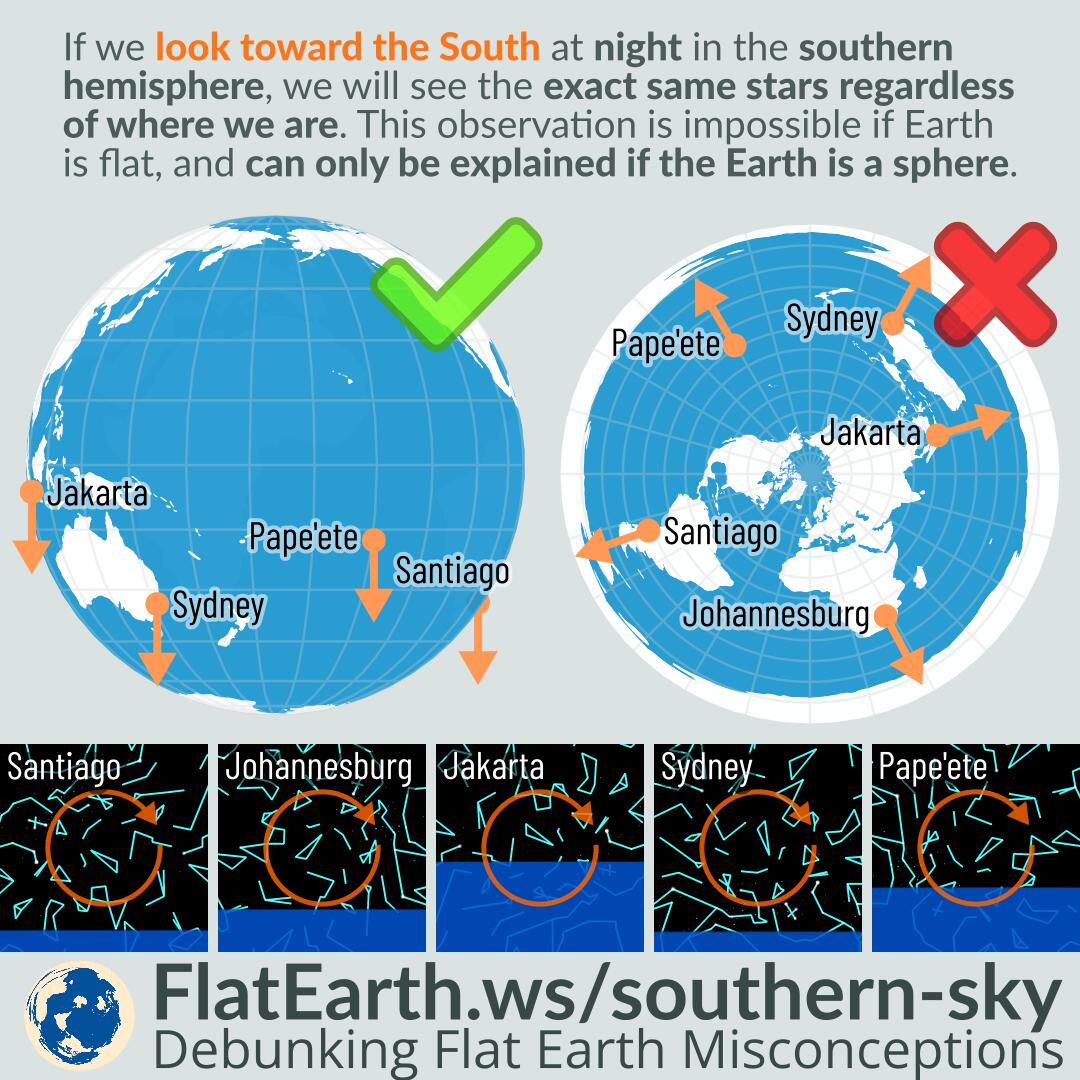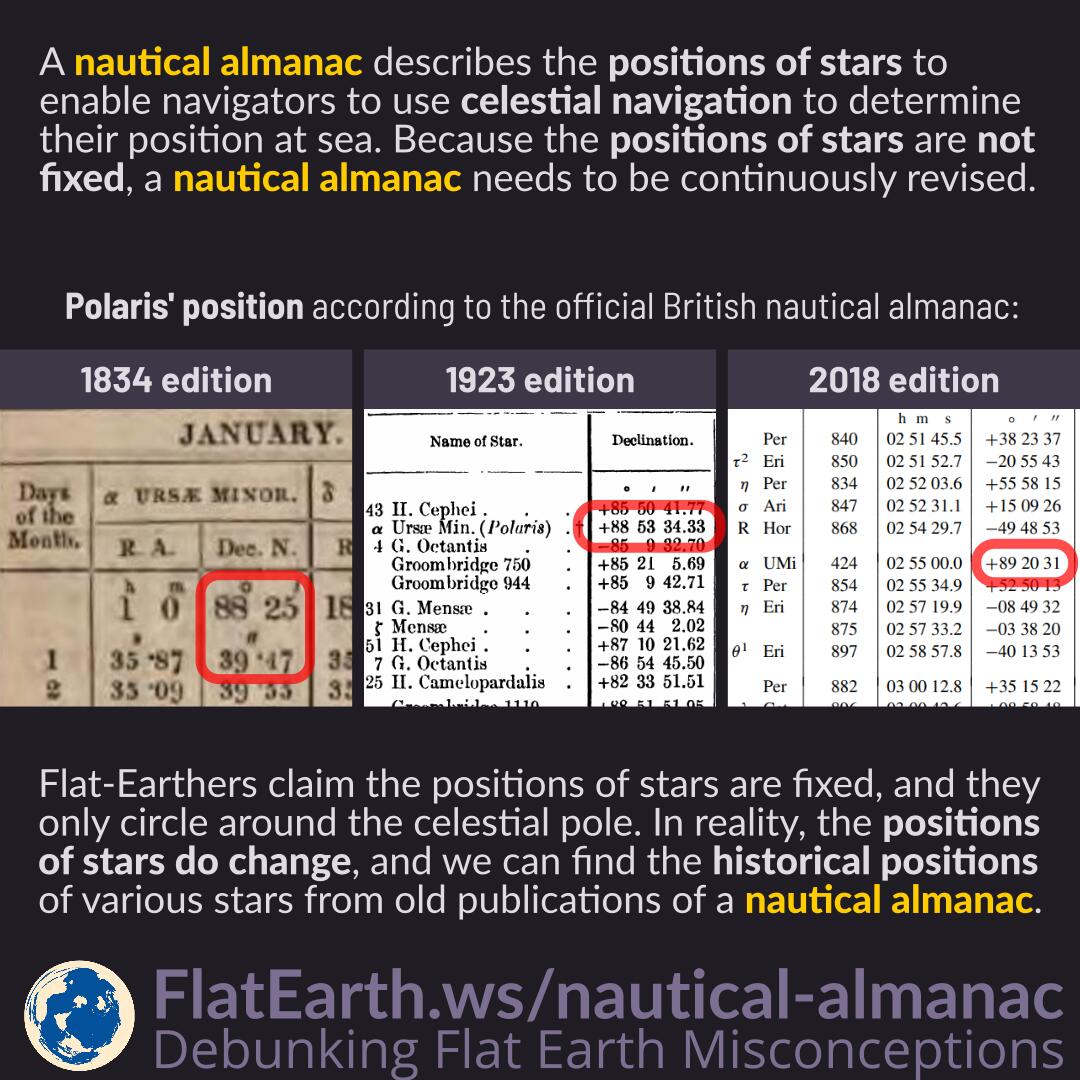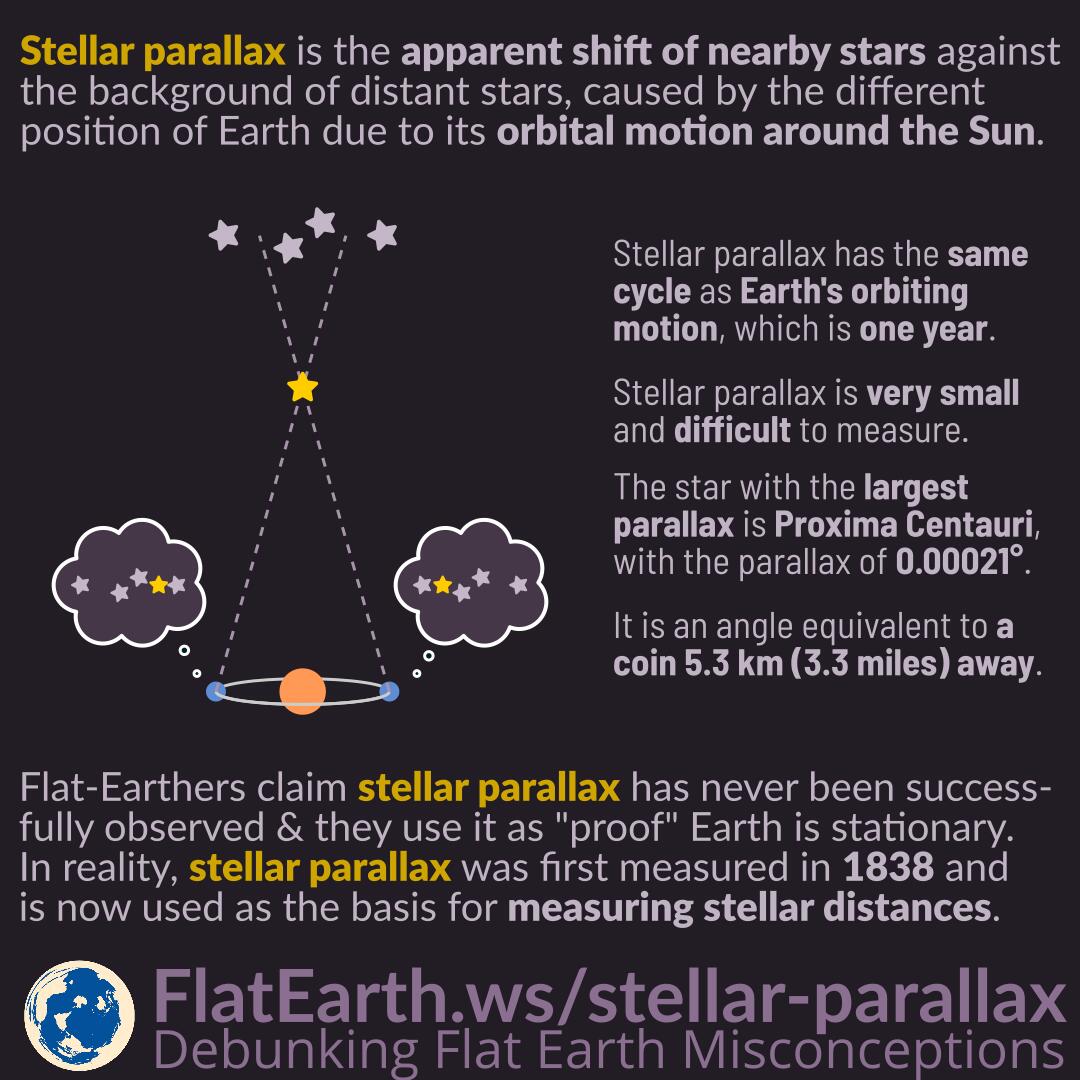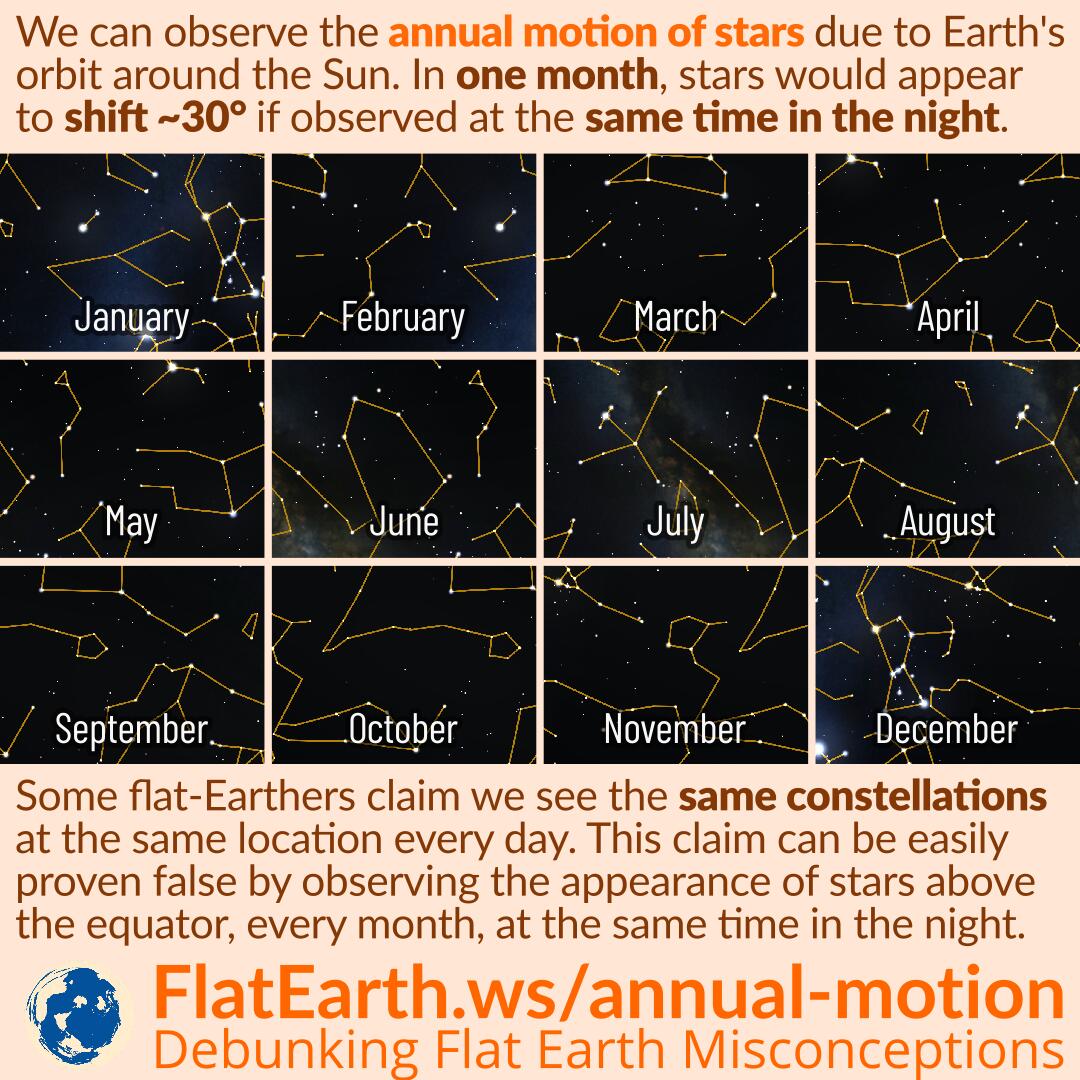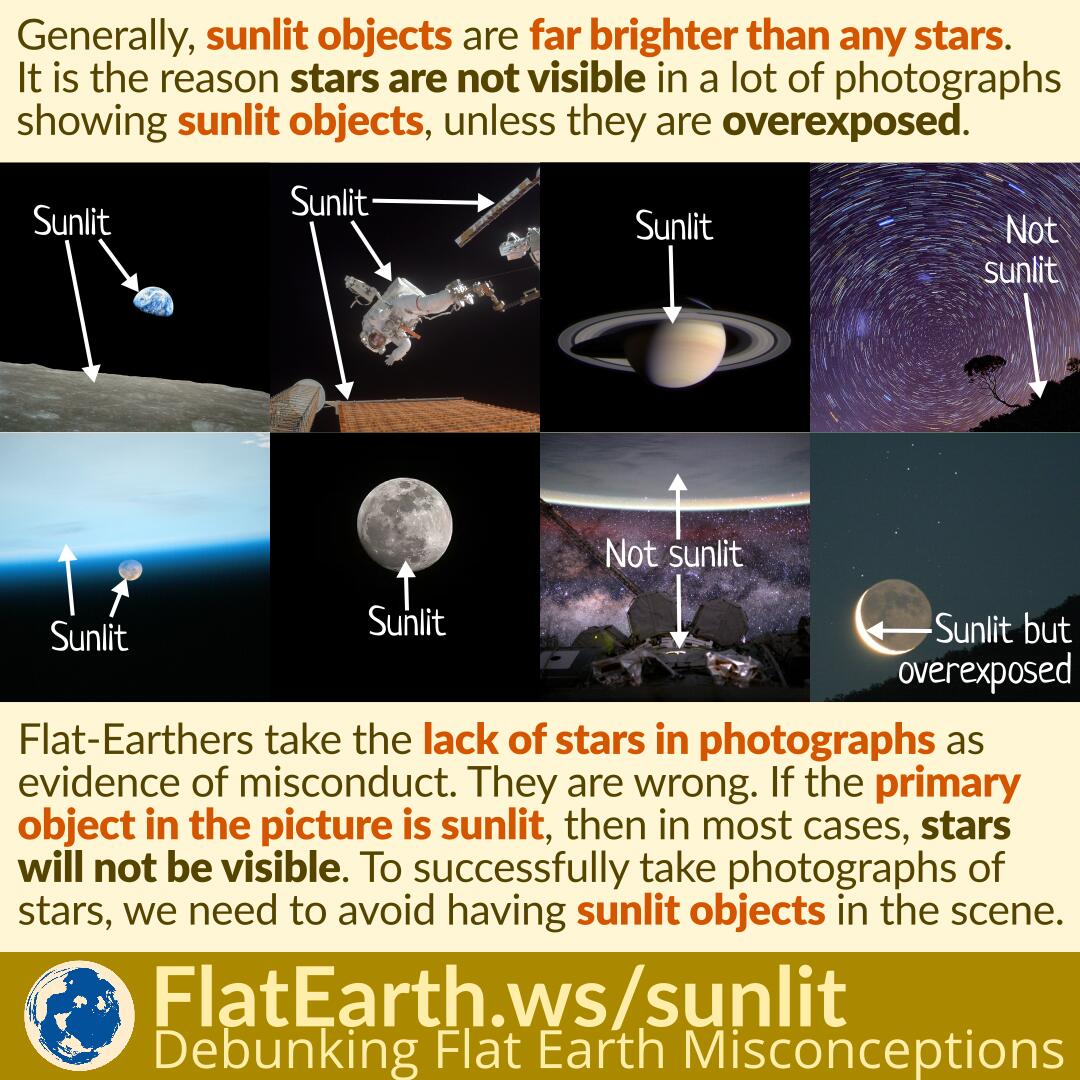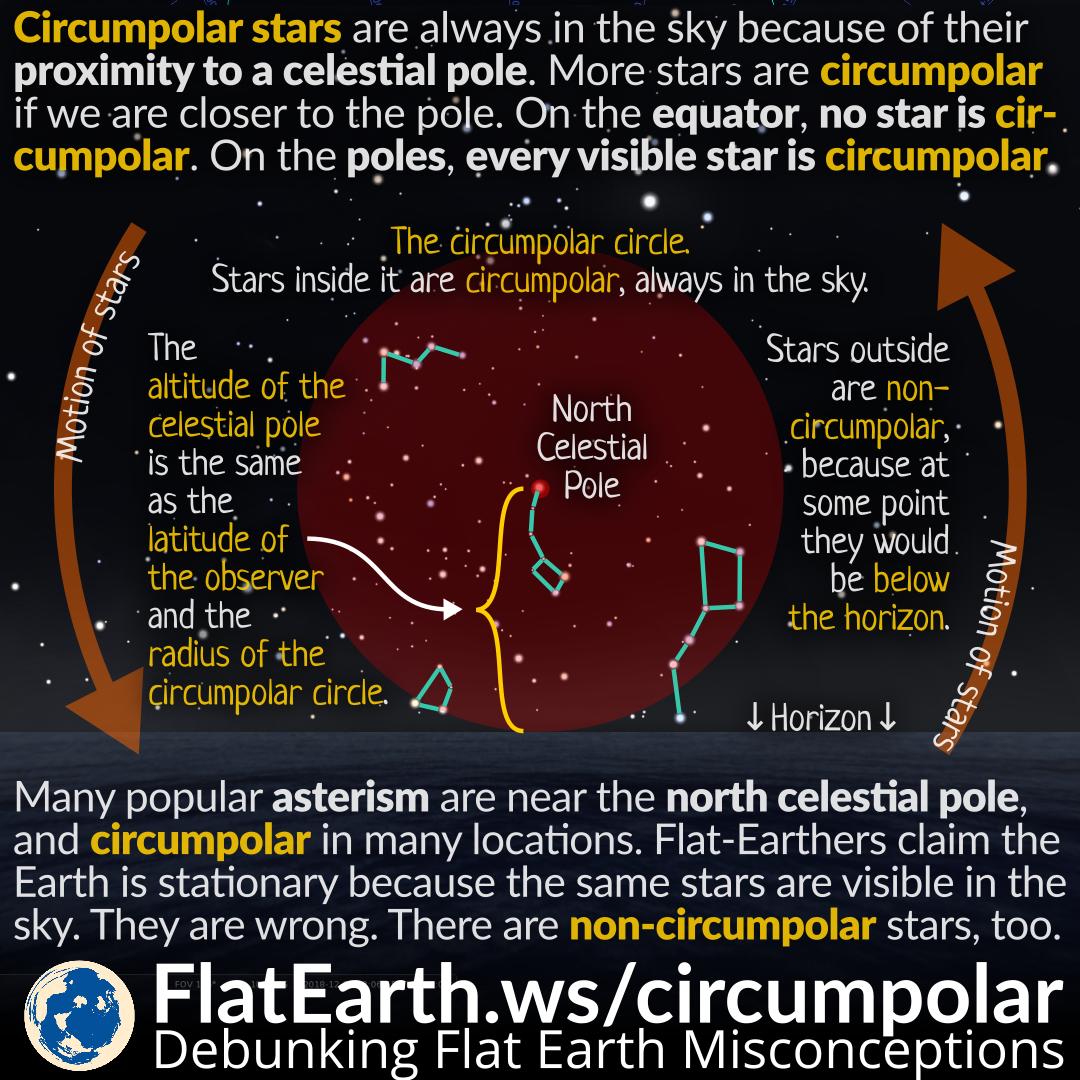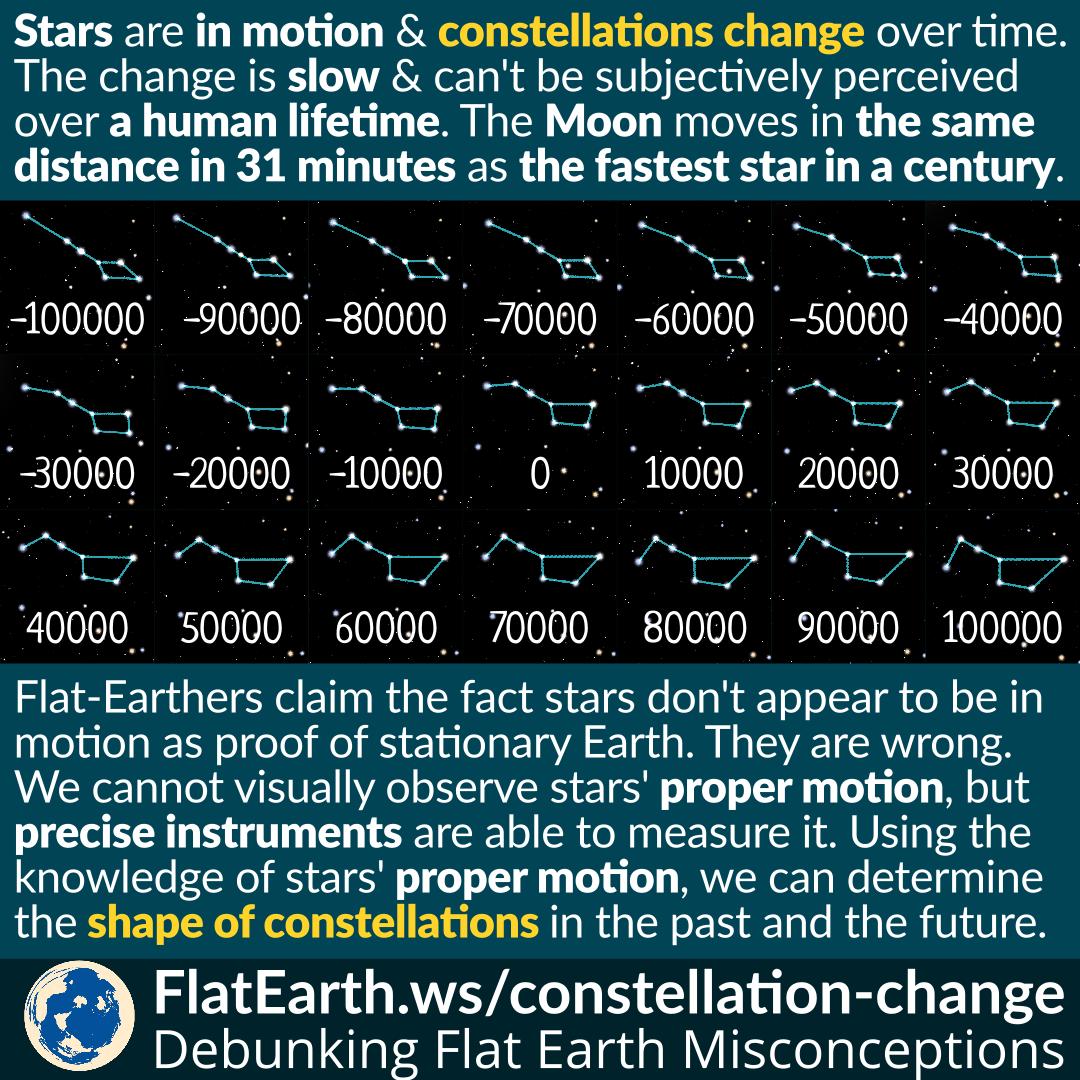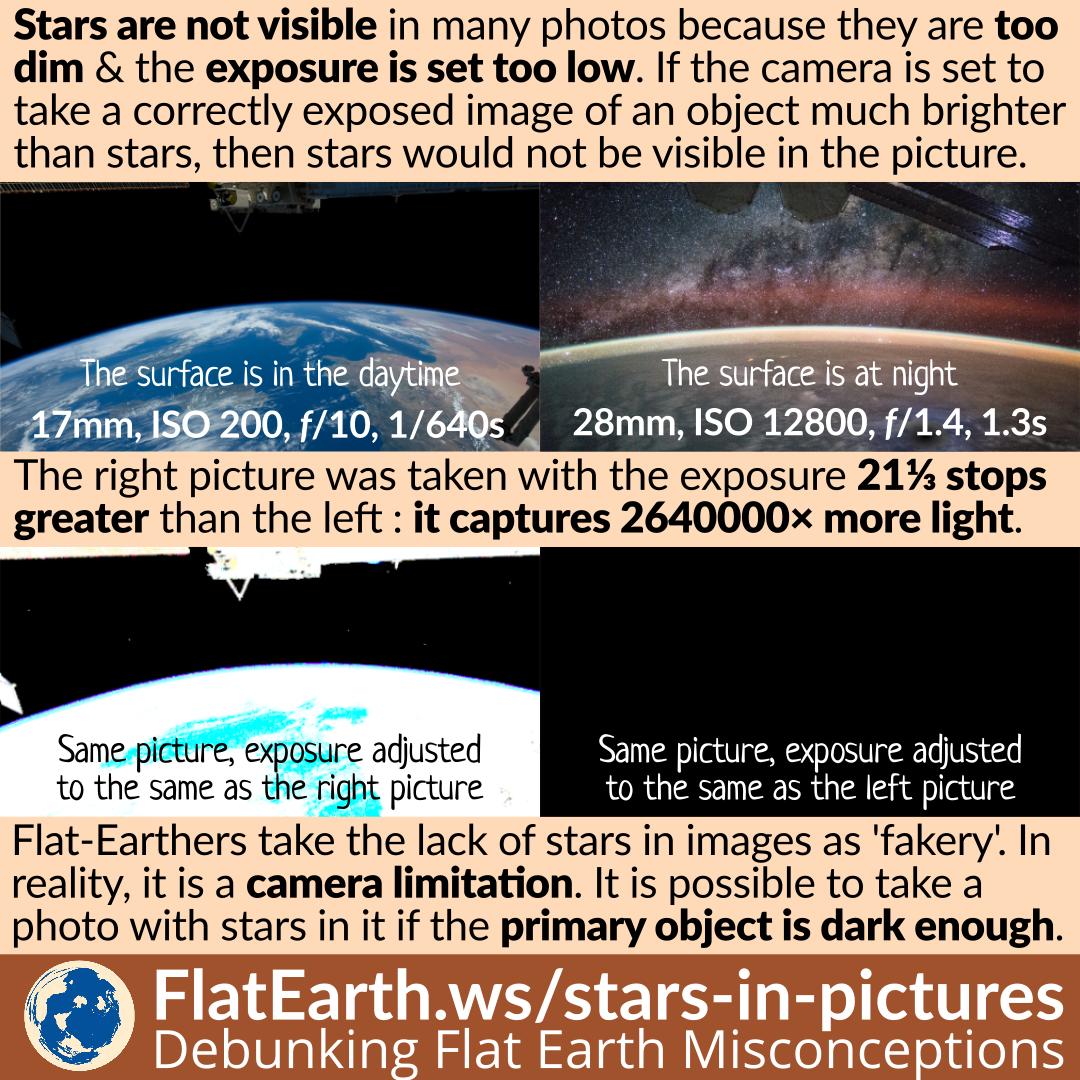Ancient Greeks have known spherical Earth since at least the 3rd century B.C. According to historian Otto E. Neugebauer, the Greeks discovered Earth is a sphere from the drastic variation in the stars’ positions & motions between Greek settlements of different latitudes.
Point Source
A point source is a source or reflection of light with a smaller angular size than the angular resolution of the observer. It is visible as a bright dot if bright enough against a dark background but not resolvable, or no detail is discernible.
Flat-Earthers claim the ISS should not be visible like a distant plane is not visible. In reality, aircraft lights can be seen from 60 km in a dark sky but are not resolvable. We can see them because they are point sources on a dark background.
Polaris Distance and How It Does Not Appear to Move
In a very casual observation, Polaris appears stationary in the sky because it is very far & we do not live nearly long enough.
Flat-Earthers use that Polaris always appears in the exact location as “evidence” of a stationary Earth. In reality, it does not appear in motion the same way mountains do not appear to move if we move less than an inch.
Continue reading “Polaris Distance and How It Does Not Appear to Move”
Milky Way Visibility
Because Earth is a sphere moving around the Sun, we can easily see the Milky Way’s center only in certain months. In other months, the Milky Way will be too close to the Sun in the sky, where sunlight will overwhelm and obscure it from view.
Flat-Earthers claim that the Milky Way is visible every night “proves” a flat Earth. In reality, we are inside the Milky Way, and some parts will be visible. However, a specific part of it, like its brighter center, will not be visible every night.
Image Noise and The “Transparent Moon” Misinformation
Image noise is a random variation of brightness or color information produced by a photo film or digital sensor. Image noise is an undesirable by-product of photography and does not come from the actual objects in the picture.
Image noise can be in the salt-and-pepper type, forming bright dots in the dark parts of the image. When appearing in the dark part of the Moon, flat-Earthers incorrectly claim they are stars, “proving” that the Moon is transparent. In reality, these are just image noise, not part of the actual objects.
Continue reading “Image Noise and The “Transparent Moon” Misinformation”
Flat Earth Dome Model
The “Flat Earth Dome Model” (walter.bislins.ch/FED) is an app created by a fellow flat Earth debunker, Walter Bislin. The app attempts to map observed reality to the flat Earth model. Lines in the app portray how light rays must have traveled if Earth were flat. They demonstrate that light must bend in a physically impossible way if Earth were flat, disproving a flat Earth.
Videos of the app are circulating in flat-Earth communities, and flat-Earthers fail to understand what the app is showing. They incorrectly assume the app “proves” a flat Earth when in reality, it thoroughly disproves the flat Earth model.
Seeing Stars in Space
Stars are dim. We can only see them if our eyes are adapted for low light. Astronauts in space can see the stars when the sun is blocked from view and avoid seeing any large sunlit objects.
Some astronauts said they did not notice the stars, but others claim they could see them. Flat-Earthers use the conflicting statements to discredit spaceflight. In reality, sometimes astronauts can see the stars, and sometimes cannot, just like us on the ground, depending on the situation.
Camera Exposure Settings to Capture the Moon and Stars
The sunlit part of the moon is far brighter than the stars in the background. But cameras have dynamic range limitations. They cannot capture extremely bright and extremely dim objects at the same time. We can increase the exposure to reveal the stars, but then the moon will appear washed out, with no visible details.
Flat-Earthers use the lack of stars in photos taken from space to dismiss them as fake. In reality, the reason for the lack of stars is the same reason stars are also missing in photos of the Moon taken with the correct exposure.
Continue reading “Camera Exposure Settings to Capture the Moon and Stars”
Stellarium
Flat-Earthers like to mention an astronomical event or a specific celestial geometry and insist it cannot possibly occur if Earth is a rotating sphere orbiting the sun. They would incorrectly proclaim it as “evidence” of a flat, stationary Earth.
We can ask them the time of the event and the observer’s location, then use Stellarium or a similar app to simulate the event. If it produces the same result as the actual observation, then they have nothing to complain about. And the problem was just caused by their failure to understand and to create the correct model.
Stars in the Southern Sky Prove Earth is a Rotating Sphere
If we look toward the south at night in any location in the southern hemisphere, we will see the same set of stars. We will see the stars rotating around the south celestial pole, in the Octans constellation, near the star Sigma Octantis.
The flat-Earth model cannot explain the phenomenon. Looking at the so-called ‘flat-Earth map,’ we should see another set of stars on a different location in the southern hemisphere. The reason is that the flat-Earth model is a false representation of the Earth.
Continue reading “Stars in the Southern Sky Prove Earth is a Rotating Sphere”
Nautical Almanac
A nautical almanac is a publication that describes the positions of stars to enable navigators to use celestial navigation to determine their position at sea. Because the positions of stars are not fixed, a nautical almanac needs to be continuously revised.
Flat-Earthers claim that the positions of stars are fixed, and they only circle the celestial pole. In reality, stars’ positions do change, and we can find the historical positions of various stars from old publications of a nautical almanac.
Planets vs Stars
Planets are not stars. On casual observation, both planets and stars appear as bright dots in the night sky. But with careful observation, we know planets are different from the stars.
Flat-Earthers insist that planets are just stars. In reality, we can easily observe many of the planets’ attributes that set them apart from the stars —using minimal efforts and equipment.
Stellar Parallax
Stellar parallax is the apparent shift of the position of a nearby star against the background of distant stars. It is the result of Earth’s orbital motion around the Sun. It is tiny and difficult to observe. Successful measurement of stellar parallax was done only after the 19th century.
Some flat-Earthers claim that stellar parallax has never been successfully observed, and they use it as ‘evidence’ Earth is stationary. In reality, stellar parallax has been successfully measured in 1838 and is now used as the basis for measuring stellar distances.
Star’s Annual Motion
On each day, we can observe stars to drift about 1° in their motion around the celestial pole. In a month, they will appear to have moved about 30° when observed at the same time in the night. In a year, they will be back to their original positions as the same day in the previous year. The observation is the basis of the solar calendar system we are using today.
Some flat-Earthers claimed that the stars appear the same every night, and they would erroneously conclude that the Earth is stationary. In reality, stars are shifting about 1° every day.
The Moon and Stars in a Single Picture
Stars are not visible in photos of the Moon –including those taken from the lunar surface— because the Moon is sunlit. The exposure needed to take a photograph of the Moon is not that much different from that used to take a photo in daylight on Earth’s surface.
To demonstrate this, we can try taking a picture of the Moon with stars visible, on the conditions: 1. The lunar features, like the craters, are correctly exposed, not overexposed. 2. Taken in a single exposure, not HDR, and not the result of editing. Even if we are using the best camera available today, the stars can’t show up in large enough quantity.
Sunlit Objects and Visibility of Stars
Generally, sunlit objects are far brighter than any stars. It is the reason stars are not visible in a lot of photographs showing sunlit objects unless the objects are overexposed and made much brighter than the correct exposure.
Flat-Earthers take the lack of stars in photographs as evidence of misconduct. They are wrong. If the primary object in the picture is sunlit, then in most cases, stars will not be visible.
Circumpolar and Non-Circumpolar Stars
A circumpolar star is a star, as viewed from a given latitude on Earth, that never sets below the horizon due to its apparent proximity to one of the celestial poles. Circumpolar stars stay up there in the sky, even during the day.
Flat-Earthers claim the Earth is stationary because the same stars are always visible in the sky. They are wrong. Only circumpolar stars are always in the sky. There are others that are not circumpolar. Some are only visible during certain times in a year.
The Change of Constellations
We can’t observe stars moving relative to each other, and the shape of constellations looks the same every night. The reason is not that stars are stationary, but their motions are very slow and cannot be observed over the timescale of human life.
Flat Earthers claim that the fact constellations don’t appear to change as proof the Earth is stationary. They are wrong. Stars have proper motion, but they can only be observed using precise instruments over a long time. Constellations do change, but the change is slow and cannot be perceived over the timescale of human life.
Diurnal Motion – Possibly the First Evidence of Spherical Earth
Diurnal motion is the apparent daily motion of stars around the two celestial poles due to Earth’s rotation. The stars move in a peculiar way that can only be explained in the spherical Earth model.
All the differences of diurnal motion that occur in the different latitudes on can never be explained in a flat Earth.
Continue reading “Diurnal Motion – Possibly the First Evidence of Spherical Earth”
The Lack of Stars in the Pictures of Space
In many pictures taken from space, stars are not visible, even with a dark sky. The reason is that stars are very dim compared to the primary object in the pictures. If the camera is set to take a correctly exposed image of an object that is much brighter than the stars, then the stars would not be visible in the picture. The same thing would happen everywhere, in space, or on the surface of the Earth.
Flat-Earthers often take the lack of stars as fakery. They are wrong. This is simply a limitation of any camera.
Continue reading “The Lack of Stars in the Pictures of Space”


